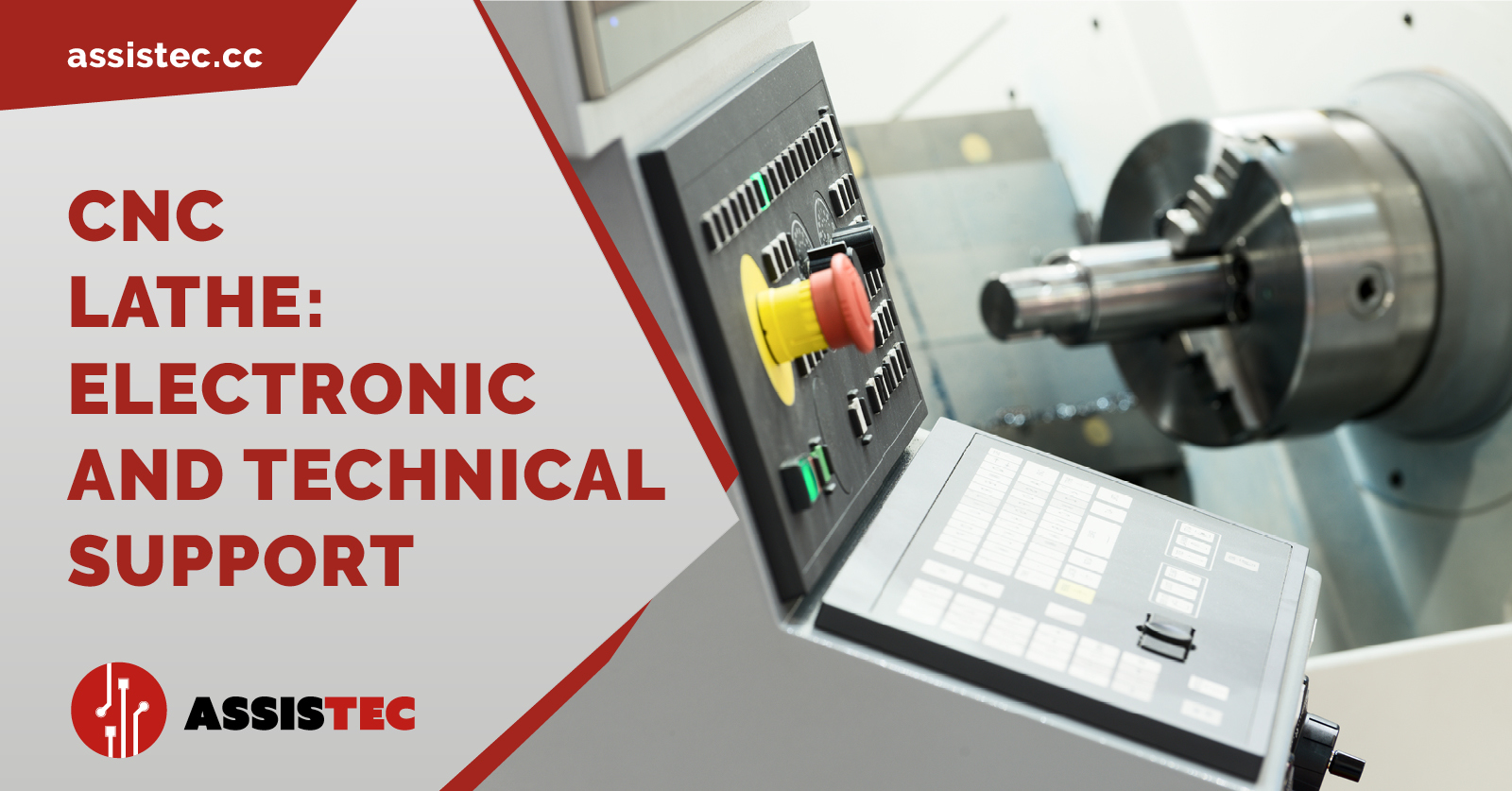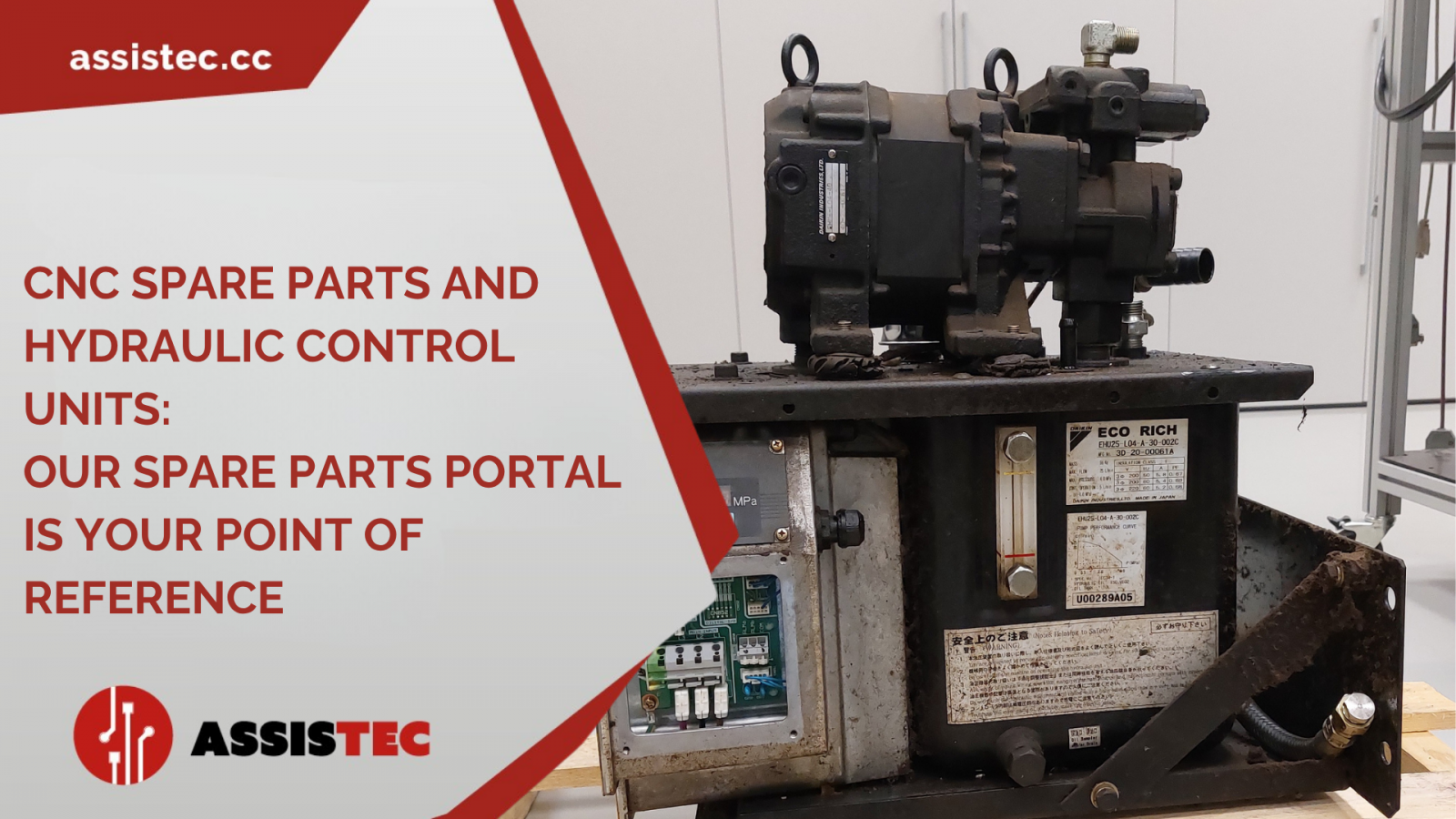What is a CNC lathe and how does it work?


What is a CNC lathe and how does it work?
The computer numerical control (CNC) lathe is one of the most advanced and precise tools in the field of machining. Its ability to perform complex machining operations with high precision and repeatability has, on balance, revolutionised the manufacturing industry, significantly optimising production processes in many sectors. In the following lines, we will explore in detail how the CNC lathe works, analysing its main components, the programming process and practical applications.
We will also look at the interactions between hardware and software, the types of tools used and how machining parameters are controlled, to summarise the potential of a technology that has become strategically relevant today.
What is a CNC lathe?
A CNC lathe is a machine tool that is used for machining metals and plastics, wood and other materials. What immediately catches the eye, structurally speaking, is that unlike traditional lathes (where the operator manually controls machine movements) the CNC lathe is controlled by a computer. This computer runs a specific programme for the desired machining operation, which guarantees greater precision, repeatability and productivity.
What does a CNC lathe look like? The main components are:
-control unit - the ‘brain’ of the machine, which executes the CNC programme and controls machine movements;
-motors - which drive the machine axes with precision; -spindle - which clamps and rotates the workpiece;
-tool storage - the space in which a variety of cutting tools for different machining operations are contained;
-sensors - which detect the position of the workpiece and tool, providing feedback to the computer;
-cooling system - responsible for cooling the tool and workpiece during machining.
The selection of the right tools serves to ensure the quality and efficiency of machining. Each tool is designed for specific materials and operations, and the appropriate selection depends on the type of machining to be performed, the workpiece material and the required tolerances. Tools for a CNC lathe are therefore classified according to their use:
-turning - to remove material from the outer surface of the workpiece, obtaining the desired shape;
-drilling - to create holes with high precision;
-threading - to create internal or external threads;
-boring - to improve surface finish and dimensional tolerances of holes.
How does a CNC lathe work?
The operation of a CNC lathe goes through five steps performed in sequence:
1. programming - The process begins with the creation of a CNC programme that defines the specifications of the machining operation, such as the shape of the part, dimensions, tolerances and cutting parameters (spindle rotation speed, tool feed rate and depth of cut). A programming language specific to CNC machines is used to write the programme;
2. workpiece fixing - The workpiece is fixed firmly on the lathe spindle which, as we have seen, rotates it during machining;
3. movement control - The CNC lathe has motors that move the machine axes with extreme precision. These are controlled by the computer based on the CNC software and ensure that the tool moves with the correct trajectory and speed;
4. machining - the cutting tool is brought close to the rotating workpiece and begins to remove excess material, shaping the workpiece to the desired shape;
5. monitoring and control - during machining, the computer constantly monitors the cutting parameters, machine status and process progress, intervening in the event of errors or anomalies.
How does the CNC lathe software work?
The CNC lathe is a complex machine that integrates advanced hardware components with sophisticated software systems. The software, i.e. the CNC programme, is usually a CAD/CAM programme through which the workpiece is designed and the G-code, a standard programming language that controls the movements and operations of the lathe, is generated.
As we have seen, the basis of the process is the creation of the part model using CAD (Computer-Aided Design) software.
Next, the model is imported into Computer-Aided Manufacturing (CAM) software that generates the aforementioned G-code. This code is then loaded into the lathe's CNC controller, whose job is to translate instructions into precise axis and spindle movements, synchronising cutting, drilling and turning operations.
Sensors built into the machine ensure that operations are carried out with maximum precision, correcting any deviations from the programme.
In summary, the parameters the software works on include:
-spindle speed, on which the quality of the cut and the finish of the product depend, as well as the wear of the tool itself;
-feed speed, to avoid overloading the tool and workpiece;
-depth of cut, i.e. the amount of material removed in a single pass of the tool. Correct calibration serves to reduce the risk of deformation or damage to the workpiece;
-lubrication and cooling, because (when set correctly) the use of cutting fluids reduces friction and heat, improving the quality of the machined surface and also increasing tool life.
The CNC software allows these parameters to be programmed and monitored in real time, automatically adapting the settings to optimise the machining process.
The advantages of the CNC lathe
Why use a CNC lathe instead of a traditional one? CNC machining guarantees:
-high precision and repeatability, as computerised control ensures that each part is machined with maximum precision and uniformity;
-high productivity, with 24/7 operation, reduced cycle times and minimal waste;
-flexibility, as it can be programmed to perform a wide range of complex machining operations;
-safety, as the operator is not directly involved in the machining process and the risk of accidents is therefore reduced.
CNC lathe: Assis-Tec services
Assis-Tec provides high-quality electronic and technical support for CNC lathes and a wide range of other CNC machines.
By turning to us, you will ensure correct operation, maximum productivity and safety over time. Regular service allows us to identify and solve small problems before they turn into major failures, causing costly downtime and loss of production.
Regular servicing also ensures that the lathe always complies with current safety regulations, protecting the safety of operators and preventing accidents. In the event of a breakdown, then, an efficient service ensures a quick and decisive intervention, minimising downtime and allowing a quick return to production. And let's not forget that the CNC technology sector is constantly evolving.
A qualified support service allows the software (and lathe components) to be programmed and updated with the latest developments, for optimum performance and compatibility with new industry standards.
Regular maintenance and timely intervention in case of failure help extend the life of the CNC lathe, avoiding the need for new purchases and maximising the return on investment.
At Assis-Tec you will find:
-Qualified and up-to-date technicians
-Quick and decisive interventions
-Use of original spare parts
-Accurate diagnoses and customised solutions
-Continuous technical support
Contact us to learn more about our services to make your company's CNC lathes perform at their best!
Recent Posts

-
The efficient management of CNC machine tools cannot be separated from a reliable, timely and well-organised spare parts system. This is where the Assistec Spare Parts Portal comes into play, designed to provide concrete support to workshops, maintenance technicians, technical managers and industrial buyers.
Thanks to direct integration with the automated warehouse, the portal allows you to identify and order new and remanufactured components in just a few clicks, with real availability and fast shipping.
Among the most requested spare parts today are hydraulic control units, which are essential for ensuring the operational continuity of CNC systems
-
Why is field service strategic for BIGLIA machine tool users?
BIGLIA machine tools represent a benchmark in the world of CNC turning, thanks to their precision, reliability and operational flexibility. But even the most robust lathes, in order to maintain high quality standards and constant productivity, require a specialised technical partner capable of guaranteeing rapid and effective intervention.
In this context, Assistec, a company that for over twenty years has been supporting mechanical companies and workshops with a complete field service for BIGLIA machines, providing know-how, rapid intervention and multidisciplinary expertise.
-
Doosan CNC machine tools are synonymous with reliability, precision and versatility. Like any production system, however, these solutions require maintenance, upgrades and, in many cases, targeted interventions to extend their operational life and improve their performance. Who to turn to? The Doosan technical support and retrofit service on Doosan turrets offered by Assistec is a real opportunity to optimise production efficiency and ensure maximum safety on the shop floor.


.png)